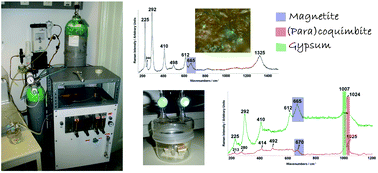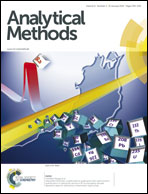Multianalytical approach to explain the darkening process of hematite pigment in paintings from ancient Pompeii after accelerated weathering experiments
Abstract
In this paper, recently excavated fresco painting fragments from the House of Marcus Lucretius (Pompeii) and not exposed to the atmosphere since the eruption of the Mount Vesuvius were subjected to a controlled SO2 atmosphere and high relative humidity. These experiments were conducted in order to simulate under accelerated conditions the possible deterioration of the hematite pigment and plaster. The mineralogical transformation of the polychromy and plaster was monitored using mainly Raman spectroscopy, a non-destructive technique, but also infrared spectroscopy (FT-IR) and scanning electron microscopy energy-dispersive X-ray spectroscopy (SEM-EDS). After different exposure cycles to SO2, it was confirmed that hematite red pigment (Fe2O3) can be reduced into magnetite (Fe3O4), which provides the darkened colour to the pigment. While Fe(III) from hematite is reduced into Fe(II) or mixed Fe(III) and Fe(II), the SO2 can be oxidized (SO3) and hydrated to experience a subsequent wet deposition (H2SO4 aerosol) causing also the transformation of calcite into gypsum. Finally, it was assessed that high concentrations of SO2 can also cause the sulphation of hematite pigment promoting its transformation into paracoquimbite/coquimbite (Fe2(SO4)3·9H2O). Moreover, in some areas of the deteriorated painting fragments, non-expected iron(II) sulphate and sulphite species were also identified.


 Please wait while we load your content...
Please wait while we load your content...